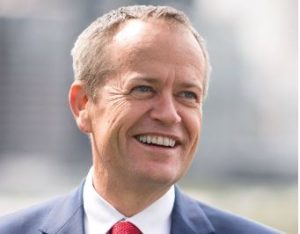NDIS to be made more accessible to CALD communities
Access to the NDIS for people from culturally diverse communities will be made easier, the federal minister in charge of the scheme, Bill Shorten, says.
 Speaking at the National Press Club in Canberra recently announcing reforms to the scheme, Mr Shorten pledged to make “access to the NDIS equal for everyone”.
Speaking at the National Press Club in Canberra recently announcing reforms to the scheme, Mr Shorten pledged to make “access to the NDIS equal for everyone”.
“When I have said that there are some people not in scheme who should be in the scheme, I’m largely thinking of CALD and first nations’ communities,” he said.
“I’ve been meeting with representative groups from CALD communities. And this starts with the capacity of agencies. We need more people in the process with CALD and first nations’ backgounds.
“We also need outreach to these communities and we need to improve the bureaucracy attached to the NDIS. Not everyone is a digital guru so we need to simplify the front door of the scheme.
“But it’s a work in progress,” Mr Shorten said.
Migrant and refugee settlement agency AMES Australia welcomed the move with AMES Chief Executive Cath Scarth saying welcomed Mr Shorten’s comments were “welcome and timely”.
“We know that people from CALD communities are under-represented and we know there are several reasons for this,” Ms Scarth said.
“These include complex assessments and access request forms, long waiting lists, costs of reports, need for a formal diagnosis, lack of in-language information, visa eligibility, lack of culturally responsive support, language proficiency and a lack of understanding of what service are available.”
Ms Scarth said among the solutions to the issue of under-representation were experienced staff and specialist knowledge.
“We need to recognise that community attitudes towards disability and levels of knowledge vary significantly among and across different CALD communities when developing policies, information materials and when engaging with different cohorts.
“The development and support of outreach activities to engage CALD communities in increasing their involvement in mainstream disability services would be very welcome, as would developing accessible disability information materials and web content in community languages,” she said.
At the end of 2017, an estimated 22 per cent of NDIS participants would be expected to be from CALD backgrounds. However, most recent data identifies that only 9.2 per cent of NDIS participants across Australia identified as CALD; and 11.7 per cent in Victoria.
Ms Scarth said intersectionality, and not ‘just’ the disability should be considered when making decisions directly impacting people with disability from CALD backgrounds as it can lead to an increased risk of discrimination.
“People with a disability have a much higher risk of experiencing abuse and violence, often perpetrated by their carers, and in their primary place of residence, both at home or within a care facility; with women and girls particularly vulnerable,” Ms Scarth said.
“Women and girls with disabilities are twice as likely as women and girls without disabilities to experience violence throughout their lives with over one third of women with disabilities experiencing some form of intimate partner violence,” she said.












